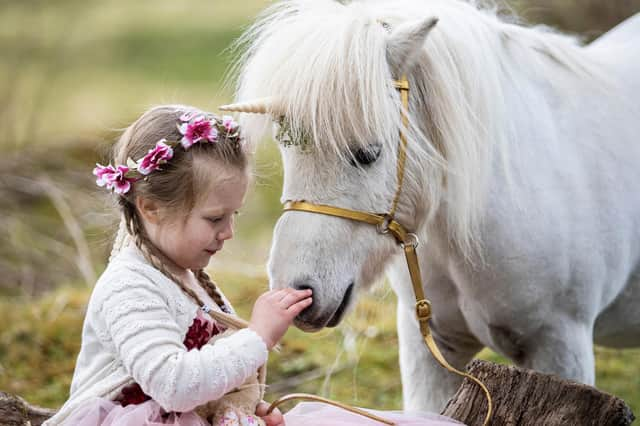National Unicorn Day: Scotland's national animal toasted at mighty Stirling Castle


A series of events will be held at Stirling Castle, where unicorns feature prominently in the Queens Inner Hall, to toast the legends of the mythical creature that was incorporated into the royal coat of arms of Scotland by King Robert III (1337-1406).
It is said he chose the unicorn to reflect strength, purity, and freedom as the kingdom of Scotland was rebuilt following decades of war with England.
Advertisement
Hide AdAdvertisement
Hide AdThe Unicorn has also long been regarded in folklore as the natural enemy of the lion - a symbol that the English royals adopted around a hundred years before.
The online celebration of the unicorn at Stirling Castle is being staged by Historic Environment Scotland today (Friday) and will feature a series of events and talks, which are mainly aimed at children.
A unicorn called Pumpkin, a finely-dressed miniature Shetland pony, will make a star appearance along with his handler Sandy.
Kit Reid, Senior Interpretation Manager at Historic Environment Scotland, said: “Unicorn symbolism has been part of Scotland for centuries – as well as being Scotland’s national animal, unicorns are featured in the architecture and collections at many historic sites including Stirling Castle.
“In lieu of physical events just now we’re inviting families to help us celebrate the mythical beast with our Virtual Unicorn Day.”
In the coat of arms approved by Robert III, two unicorns support a shield with the oldest surviving example of this heraldry found above the gateway of Rothesay Castle.
From the late 15th to the early 16th Century, gold coins featuring a unicorn were struck. Worth 18 shillings, the coin became a favoured gift from the Royal Court.
After the Union of the Crowns in 1603, James VI replaced one of the unicorns with a lion in a symbol of unity.
Advertisement
Hide AdAdvertisement
Hide AdHistorian Elyse Waters has long researched Scotland’s links to the unicorn and became interested in subject when she discovered a medieval cookbook that included a recipe for how best to cook the mythical beast.
In the Western World, the unicorn was believed to be real for around 2,500 years.
The existence of the mythical creature was only disproved in 1825 by scientist Baron George Covier, who said it was not possible for an animal that had a split hoof to have a single horn coming from the top of its head.
By this time, people had long become acquainted with the idea that unicorns were mythological creatures.
Unicorns can be found at numerous historic sites around Scotland. At Preston Market Cross, which stands on the edge of Prestonpans in East Lothian, a unicorn is perched at the top of a six-metre tall classical column where it is supporting a carved scroll that depicts a lion rampant.
At the royal retreat of Linlithgow Palace, the unicorn is found dotted around this favourite haunt of the Stuarts, from the ornate fountain in the courtyard to the ceiling bosses.
And at Stirling Castle in the Queen’s Inner Hall, seven grand hand-woven tapestries are based on the Hunt of the Unicorn Series which was created in the Low Countries in the early 1500s. They were replicated for Stirling in a £2m project that took 13 years to complete.